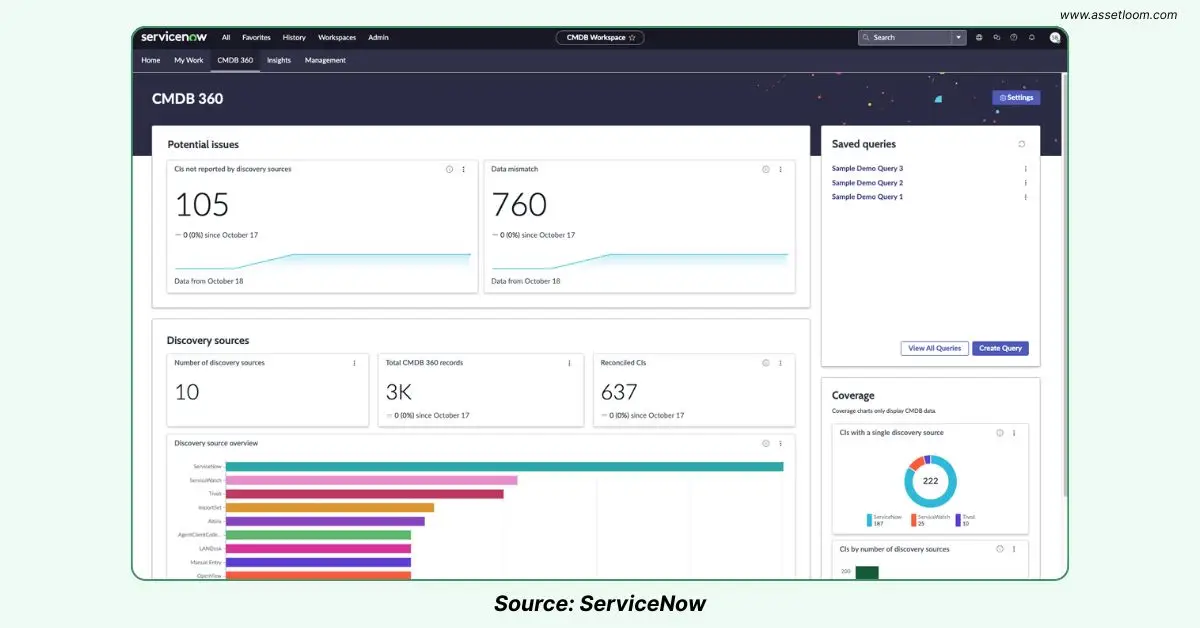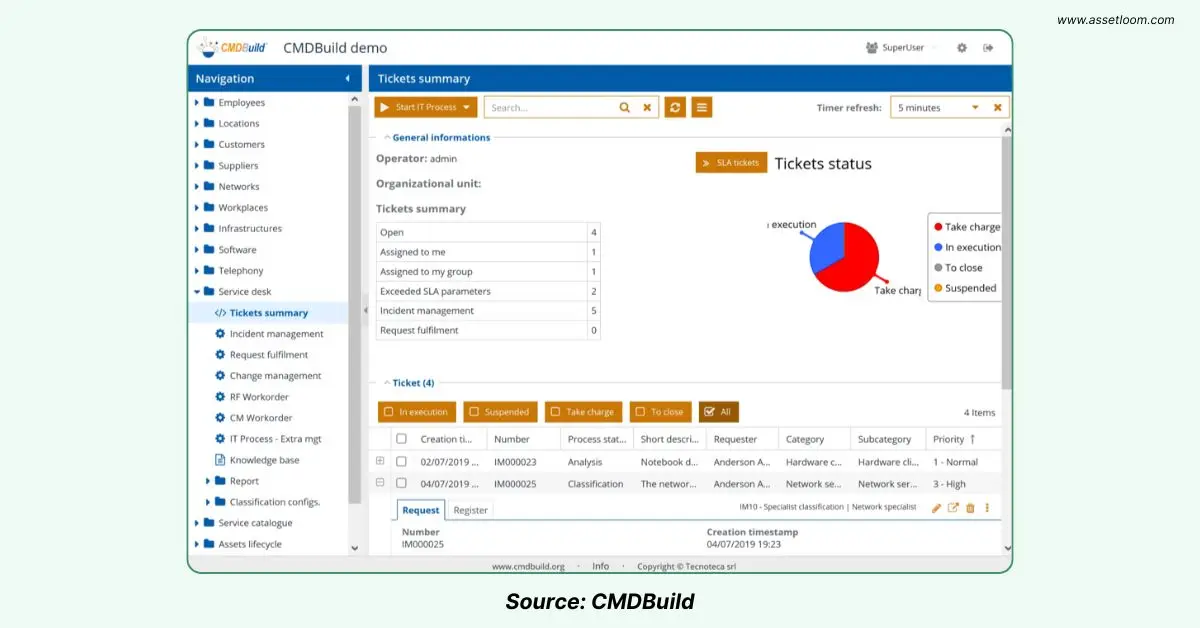Is There Room for Growth in Open-Source CMDB Discovery Tools?
Explore the growth potential of CMDB discovery tools open source, comparing their limitations with commercial solutions.
Is there room for growth in CMDB discovery tools open source?
Look, I get it. When you think about CMDB discovery tools, the big players like ServiceNow, BMC Helix, and Device42 come to mind. They come with advanced features, extensive customer support, and deep integrations, which makes them the go-to choice for large enterprises. In fact, commercial solutions dominate the market, providing a comprehensive array of capabilities that open-source CMDB discovery tools simply can't match, at least, not yet.
So, with the overwhelming dominance of paid solutions, you might wonder: Is there really room for growth for open-source CMDB discovery tools? Can these free tools continue to evolve and meet the demands of modern enterprises, or have they reached their limits?
Let’s break down where they stand today, why they’re struggling, and how they could carve out a bigger slice of the pie.
What’s The Deal with CMDB Discovery Tools?
For those who aren’t familiar with it, a CMDB (Configuration Management Database) is like a master spreadsheet for your IT assets: servers, apps, networks, and how they all connect. Discovery tools automate the process of finding these assets, mapping their relationships, and keeping the data fresh.
Read more: CMDB Discovery Tools: What They Are and Why Your IT Team Needs One
The CMDB market is booming, worth $2.56 billion in 2023 and expected to hit $6.12 billion by 2031, growing at a 12.69% CAGR. Commercial tools are eating up most of that growth, but open-source options are still in the game, especially for smaller businesses or those who love to tinker. So, are they doomed to stay niche, or can they step up?
Why Paid CMDB Discovery Tools Dominate the Market?
Let’s be honest: Users are always looking for what’s best for their business, which means the CMDB discovery tools they choose should meet their exact needs, even more than users realize. Paid CMDB discovery tools must offer exceptional value to maintain such a stronghold in the market.
And the reasons lay in:
- All-in-One Powerhouses: ServiceNow or BMC Helix aren’t just CMDBs, they’re full-blown ITSM platforms with automated discovery, AI analytics, and integrations for everything from cloud platforms to DevOps tools.
- Built for Scale: Got a global company with thousands of servers across AWS, Azure, and on-prem data centers? Commercial tools handle that without breaking a sweat.
- Hand-Holding Support: Paid tools come with dedicated support teams, detailed guides, and training programs. If something goes wrong, you’ve got a lifeline. That’s a big deal for businesses that can’t afford downtime.
- Security and Trust: Commercial vendors pour money into security patches, compliance certifications, and robust access controls. For industries like banking or healthcare, that’s non-negotiable.

Related article: ServiceNow CMDB
With all this going for them, it’s no wonder commercial tools dominate. They’re the safe bet for enterprises that need reliability and don’t mind paying for it.
Where Open-Source CMDB Tools Fall Short
Well, CMDB discovery tools open source have their limits, and those limits make it tough to compete. Here’s where they’re hitting roadblocks:
- Missing the Wow Factor: CMDB discovery tools open source are solid but don’t have the fancy AI or real-time analytics you’d find in commercial tools. They’re more basic, which can feel like a downgrade.
- Scalability Concerns: If you’re a small or medium business, open-source tools like iTop or Ralph work fine. But for huge enterprises with sprawling IT environments? They often can’t keep up.
- Security Concerns: Open-source code is out there for anyone to see, which is great for transparency but not so great if hackers find a vulnerability before the community patches it.
- DIY Vibes: Setting up something like CMDBuild takes serious know-how. You need to configure data models, tweak workflows, and maybe even write some code. Compare that to commercial tools, which are practically plug-and-play.
- Lack of Dedicated Support: No 24/7 hotline here. Open-source tools rely on community forums or third-party consultants. If you’re stuck, you might be digging through outdated wikis or begging for help on Reddit.
- Slow Updates: Development depends on volunteers or small teams. DataGerry, for example, has slowed down lately, leaving users waiting for new features.
Okay, so commercial tools are killing, but are CMDB discovery tools out of the game? There’s room for them to grow, especially if they play their cards right.
Rooms for CMDB Discovery Tools Open Source
1. Winning Over Small Businesses
Not every company has the budget for a ServiceNow subscription. Small and medium businesses, startups, or non-profits often need affordable options. Tools like Snipe-IT or DataGerry are perfect for these SMEs. They’re free, flexible, and good enough for smaller setups. If these tools focus on making setup easier (think pre-built templates or one-click installs), they could grab a bigger chunk of this market.
Related article: Snipe IT Asset management vs. AssetLoom: Which Tool Is For You?
2. Nailing Niche Needs
Open-source tools shine when it comes to customization. Got a weird workflow that ServiceNow doesn’t cover? CMDBuild lets you build custom data models to fit your exact needs. Schools, research labs, or small industries could use these tools to create tailored solutions without breaking the bank. Adding industry-specific plugins, say, for healthcare or education, could draw in more users.

3. Riding the AI and Cloud Wave
Commercial tools may lead in AI and cloud integration, but open-source projects can catch up. Using open-source AI frameworks like TensorFlow, tools like iTop could add predictive analytics or automated dependency mapping. Plus, as more companies move to hybrid or multi-cloud setups, open-source tools that play nice with AWS, Azure, or Kubernetes (like Ralph’s multi-data-center support) could gain traction.
4. Building Stronger Communities
The open-source edge is its community. If projects like CMDBuild or DataGerry ramp up engagement, think hackathons, better forums, or clear development roadmaps, they could speed up updates and add features faster. A thriving community means more contributors fixing bugs and building better add-ons.
5. Making It User-Friendly
Let’s be real: open-source tools can be clunky. If they invest in slicker interfaces, better documentation, or Docker-based installs, they’d appeal to a broader crowd.
6. Targeting Budget-Conscious Markets
In places where money’s tight, like developing countries or public sectors, open-source tools are a no-brainer. CMDB discovery tools open source could market themselves to these regions, emphasizing zero licensing costs and community-driven flexibility.
CMDB Discovery Tools Open Source Future Trends
The IT world is changing, and these shifts could give open-source CMDB discovery tools a leg up:
- DevOps Takeover: DevOps teams love automation and open-source tools like Ansible. CMDB tools that integrate with these workflows could win over DevOps fans.
- AI for Everyone: As AI tools become more accessible, open-source CMDBs could add smart features like auto-detecting configuration issues, leveling the playing field.
Final Thoughts
To wrap it up, open-source CMDB discovery tools do have room to grow, but their future success will depend on their ability to overcome the challenges that currently limit them. While commercial solutions are likely to remain the top choice for large enterprises due to their scalability, comprehensive features, and support, open-source tools can still thrive in smaller, more niche environments.
The key to the growth of open-source CMDB discovery tools lies in continuous innovation. As the demand for more flexible, cloud-native, and customizable solutions grows, open-source tools will have the opportunity to evolve and cater to businesses that require a lower-cost alternative to paid solutions. However, for larger organizations with complex IT environments, the limits of open-source tools will likely continue to make commercial solutions the preferred option.
In the end, the growth of open-source CMDB discovery tools will depend on how well they can adapt to changing technologies and how effectively they can bridge the gap between simplicity and the enterprise-grade functionality that many businesses need. So, while commercial tools dominate today, open-source tools will always have a place, especially for those willing to put in the time and effort to make them work.

Subscribe for Expert Tips and Updates
Receive the latest news from AssetLoom. right in your inbox


